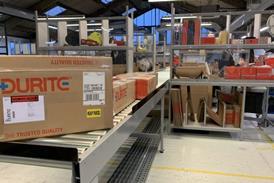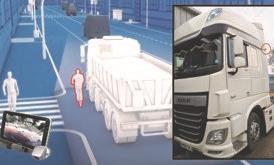
Arrow XL is the UK's largest multi-user two-man home delivery specialist, delivering around 6,000 orders every day. It was created in April 2013 with the rebranding of Yodel XL to “differentiate itself from its sister company, parcel carrier Yodel”.
Chief executive Ian Howell joined Arrow XL in October 2013. His career spans 23 years in logistics and retail, starting with 10 years in operational roles for third party logistics operators including Wincanton and Tibbett & Britten. In 2000 he moved into retail with B&Q, where he set up the home delivery infrastructure that the retailer still uses today, before moving into a broader role as supply chain director of Land of Leather.
His previous role before joining Arrow was five years as Marks & Spencer’s head of multi-channel logistics. “That covered delivery of online orders to the consumer or to store for the consumer to collect – anything from beers, wines and spirits and flowers to furniture and bulky items for two-man delivery,” Howell says. “I joined Arrow because I absolutely believe in the potential for the business.”
Howell emphasises the significant differences between Arrow and a parcels carrier like Yodel.
“I don’t like to refer to Arrow as a carrier – but I believe that if a logistics service provider can truly align itself to the consumer then it will be very successful,” he says. “If I think about my time with M&S and other retailers we obsessed about the consumer. Our behaviour was all aligned to consumer expectations and anticipating the market. I did not always believe that service providers have felt the same way, and that is an opportunity for Arrow to differentiate itself. A combination of the fact that two-man home delivery is a fragmented market, the upturn in the economy and changes in consumer behaviour make this a huge growth market and there will be some consolidation.”
Customer experience
Howell believes that to succeed in this changing market home delivery specialists must match the “customer experience” upmarket retailers aspire to deliver in their stores.
“When I was at M&S it was difficult to find a provider aligned to our values and expectations on service, which was to put customers at the heart at what we do,” he says. “Carriers like to talk about rates and I like to talk about service and customer experience.”
Ensuring Arrow delivers what the consumer wants while turning a profit isn’t easy, Howell concedes.
“My first six months at Arrow have been challenging and enjoyable,” he says. “They have been about putting the foundations in place and ensuring the business has a very clear purpose, which is to delight our clients by making their customers’ lives easier.
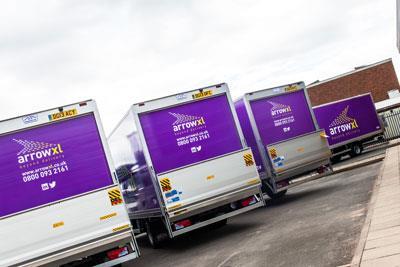
“While the word ‘easier’ might not sound particularly ambitious, when you take it in the context of providing delivery services to consumers, ‘easier’ means turning up when you say you will turn up, with the product and all its parts undamaged, informing customers when you are going to be arriving and when you do arrive ensure the delivery team is uniformed, they respect and protect the property and the goods they are delivering, and they get in and out as seamlessly as possible.”
Howell argues that if Arrow can deliver a premium service there are retailers and e-tailers out there who will pay a rate that enables Arrow to make a reasonable return.
“I am very clear – I want Arrow to work with clients who want to deliver great service and if you want great service there is a price to pay,” he says bluntly. “There are retailers and e-tailers out there looking for the cheapest possible delivery and they will probably go for a pallet carrier. That’s not what we are about and a lot of the clients we either work with or are talking to understand that consumer demand and expectations are changing and that there are hidden costs of getting it wrong.
“I am keen that our business is not commoditised. It all about the customer experience and is very different from a one-man parcel carrier operation. Whilst we are integrated with MetaPack, I would push back against any client who wants to transactionalise or commoditise us. If the motivation to work with us is price then I believe they are probably working with the wrong service provider.”
Communication
Communication with the end consumer is key to the customer experience, and is every bit as important as hitting KPIs such as on-time in full deliveries.
“We are finding that our clients are fairly well informed in terms of the journey though it is worth pointing out that the delivery which you get measured and judged on is just one component part,” says Howell. “I often refer to us as a giant contact centre – so much about what we do is talking to customers. There are a variety of delivery propositions which require different levels of customer contact. We offer next day, 48 hour and three day options and within those propositions we need to be talking to and updating customers - the more proactive communication we have without disrupting them the better the chance of success on delivery.”
But making a profit while giving the end consumer so many delivery options depends on using a multi-user network resources.
“The challenge for the market is how you invest in the technology to continue to improve,” says Howell. “For any network model, whether it is one-man, two-man or a food network, your ability to make money is largely influenced by the accuracy of the volume you deliver. The challenge we have as in any business is the accuracy of forecasting because it is about aligning our resources to the volumes we believe we will be handling.
“We have recently invested in an account management structure that supports that. We are aligning ourselves very closely with our clients so we understand their businesses and trading patterns to ensure we can employ our resources accordingly. If we do that right it is a profitable market.”
Arrow works for a wide range of clients from large retailers like supermarkets and electrical retailers through to small independents and specialist e-tailers. A significant growth area is in drop ship work (see panel), with big clients deciding they don’t want to hold stock so they can free up working capital while selling a bigger basket of products.
Arrow also handles a broad range of product types – white goods, flat pack furniture, large electrical items such as fridge freezers, washing machines and TVs, upholstery and seasonal and leisure furniture – “pretty much anything that is large and bulky” says Howell.
Network
The network consists of four hubs – Wigan which is the largest at 750,000sq ft, Worcester, Airdrie and Enfield - supported by 14 satellite outbases. Arrow runs on average 230 vehicles six days a week and fulfils around 2m two-man home delivery orders a year. “There is a lot of growth in the market and we are growing at circa 25% a year so it’s about choosing carefully the clients you want to work with,” says Howell. “It is about the alignment of the customer experience because it is our brand out there as well as the retailer’s.
“There are still opportunities out there. We are speaking to a potential client which is a high end white goods brand and one of their challenges is to deliver great service because they have their own employees delivering on behalf of their own brand. It is a very expensive service and it is hard to react to changing consumer expectation for quicker delivery and to be in control of that delivery. A business like ours offers that opportunity - we cover 98% of all UK postcodes six days a week. That is our differentiator - it is about coverage and scale and that is where we are talking to a lot of clients who run dedicated operations about how a business like ours fits into their strategy.”
Howell argues that speed and certainty of delivery is now a key issue when a consumer is deciding where to place an order for a big ticket item.
“We are seeing our clients and end consumers opting for faster delivery and for certainty so our 48 hour service has been very popular,” he says. “A client can take an order on a Monday up to an agreed cut off point and through the check out process confirm to the customer that the order will be with them on Wednesday. We would back that up with an SMS or an email to the customer confirming that when we do our planning process on the Monday evening. We then follow up with a communication of the time slot.
“Delivery is a strategic battleground for lots of retailers and e-tailers who are selling very similar products and for whom delivery is now a differentiator in terms of the customer experience. This is all about speed of delivery and giving the customer options and choices around the delivery to take some control and get the goods when they want them.”
Giving consumers options without adding cost is all about scale,” Howell says. “Traditionally solutions have been designed around the carrier to make economical loads and generate efficiency,” he goes on. “But that is the wrong solution for the consumer. Covering 98% of the UK six days a week can add inefficiency but we offset the inefficiency by having the volume. Then you can go to every area every day and then the challenge becomes the number and locations of outbases to ensure you are operating vehicles as close as possible to the population.”

Can you handle it?
The methods of getting product into Arrow XL’s network vary as widely as the clients and product types the company work with.
“Predominantly we collect product, but that depends on the size of the client,” says Howell. “We have clients where we do in-flight collections off the back of delivery rounds. We could be collecting a small handful of orders once a week or we might be doing full trailer load collections.
“Other clients will deliver into us. It depends on the location of the client and their volume whether we take product to a single point and then push it through the network or directly trunk volume to three or four of the hubs.”
Howell is keen to point out that “Arrow is not a traditional carrier like a Panther or DX” that just cross-docks and makes an onward delivery.
“That is a core competency of ours but our proposition is much broader than that. Because we have 750,000sq ft in Wigan we can do end-to-end order fulfilment. So for some clients we hold stock and we have one client where we take stock in containers from the port, feed the goods into Wigan, hold their inventory, fulfil the orders and inject them into our own network, into a one man network for smaller products and even into a pallet carrier for trade deliveries.”
A growing number of retailers now want a centralised distribution that imports goods, holds them in a UK central warehouse and ships them out through a fulfilment partner.
“One of our specialities is a drop ship vendor model,” says Howell. “A lot of our client base is keen to hold less stock but increase the range they offer to their customers, so they work with a number of vendors throughout the UK.
“The challenge that provides the retailer or e-tailer is around visibility of the customer experience. When they take orders on their website and parcel them off to a drop ship vendor they struggle to see what happens from then on - but it is their brand on the line. So we offer a complete drop ship vendor solution where we pick up on behalf of retailers and e-tailers from all their vendors and provide transparency and visibility of that journey.
“Our client can see how many orders there are, the status of those orders, how many are have been delivered and if there are any exceptions. It puts them in control and therefore they can proactively manage the customer journey, and when the delivery has been made they know they have confidence to talk to the customer.”

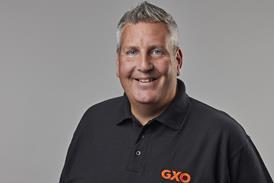
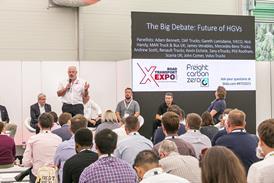
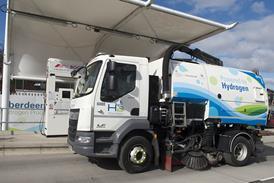


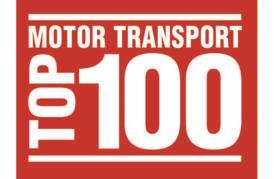
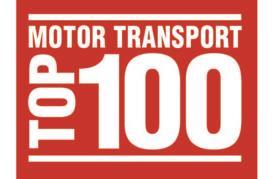
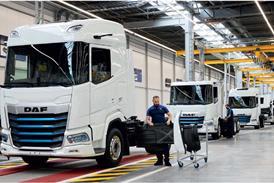
![Mercedes-Benz_eActros_600_(1)[1]](jpg/17820_mercedesbenz_eactros_600_11_978080.jpg)

